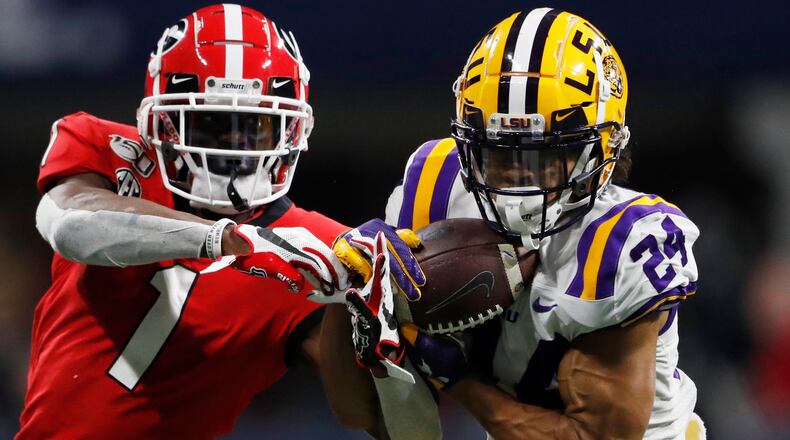It was just the other day – literally, it was Thursday and Friday – that college football 2020 seemed almost a tangible thing. The ACC announced its revised schedule, as is becoming its custom, a day before the SEC revealed its. And yet: The new work week dawned amid runaway speculation that there will be no 2020 football season. So: What the heck happened over the weekend?
Three things happened.
First, the bigger conferences finished, for the most part, their virus-impelled adjustments. The Power Five all trimmed their schedules. Most pushed back their start dates. They hadn’t made a final decision about fans in the stands, but they had answered the big logistical questions: who, when, where and how.
Second, this was the weekend where students – as opposed to only athletes – were allowed back on some campuses. Five months’ worth of theorizing is about to yield, for better or worse, to reality.
Third, the Mid-American Conference said it wasn’t playing. The MAC isn’t among the P5, but it’s in the Group of Five, which is the next level. The MAC includes programs like Central Michigan, Miami (Ohio) and Northern Illinois. It became the first FBS league to scrub its season. You might have thought the Power Fivers would look on this move and say, “That doesn’t concern us.” But it did and does.
The discussion as to whether the Power Five would play football even if nobody else did included one mighty caveat: For that to happen, you figured the five had to stick together. The belief was always that the Big Ten was the league most apt to say no, with the Pac-12 – which has four schools based in California, where gatherings of more than 50 are legally proscribed, meaning no full practices – close behind.
The Big Ten and MAC are friendly neighbors. (Unlike, er, the ACC and SEC.) When the MAC jumped, the assumption was that the Big Ten won’t be far behind. The Detroit Free Press reported Monday morning that the league, by a 12-2 vote, had moved to cancel; a conference representative denied any vote had been taken or decision reached.
When/if the Big Ten does announce it isn’t playing, the assumption is that the Pac-12 will come next, and then we’d have March 11 and 12 all over again. As of Wednesday the 11th, all conferences save the Ivy League were either playing or about to play tournaments; by 1 p.m. the next day, college basketball had bounced its last ball.
As of Sunday night, outlets from SI.com to CBS Sports to Yahoo Sports to ESPN were reporting that the college football season was close to being canceled, or at least tabled until spring. There was thought the entire Power Five would declare “We’re out” by Tuesday. As someone who has been tracking this story for, oh, five months, I can report the chances of football in 2020 have never been less, and they’re never been anywhere near good. I’m also not sure everyone is ready to concede.
The other three P5ers – the ACC, SEC and Big 12 – are more Southern and more rural than the Big Ten and Pac-12. That’s a gentle way of noting those three have bases in what are deemed red states, meaning Republican. As much as we’d like to believe all colleges from sea to shining sea share one high-minded mandate, our polarized nation has managed to turn even a pandemic into, if you’ll pardon the expression, a political football.
It made sense for every conference to stop playing basketball in March because the NCAA was about to cancel its tournament. Nobody had anywhere to go, and besides, the whole country was scared to death. As a nation, we’re not as scared as we were back then. (We’ll save the argument as to whether we SHOULD be as scared for another day.) States have reopened, not always to great effect.
The College Football Playoff is not part of the NCAA. If the SEC and/or ACC and/or Big 12 decided to try and play, the CFP might – might, I said – be willing to field a tournament with teams hailing from three leagues. We note that the 2017 and 2018 playoffs featured teams only from those conferences – plus Notre Dame, temporarily a full-blown member of the ACC.
To reiterate: The belief here remains that there’ll be no college football this fall. On Sunday, this correspondent asked a leading figure in the industry to handicap the odds of there being a season. The response: 25-75 against, even bleaker than that person’s 40-60 assessment late last month. But 25-75, we note, isn’t 0-100.
Part of me can see everyone pulling out within the next 36 hours. The pragmatic part can see the SEC, just to pick a league, holding on a while longer. Its reset start date isn’t until Sept. 26. (The Big Ten’s, announced only last week, is Sept. 5.) I can envision one or two or three conferences saying, “We’ve come this far; let’s wait to see how things go after campuses are open.” And I could understand that.
Two weeks ago, this correspondent suggested college football should wait two weeks and then make a call. Time’s up, and not much has improved, COVID-19. There’s every chance matters will worsen with campuses open and the chill of autumn just ahead. Those involved with the sport have asked and largely answered the logistical questions, but they haven’t wrapped their arms around the philosophical one. They know who and where and when and how. I’m not sure they’ve found the why.
Why should there be football in 2020? Because it makes money for schools and networks? Because coaches want it? Because players want it? Because fans want it? All of that is true. None of it, however, seems reason enough.
About the Author


